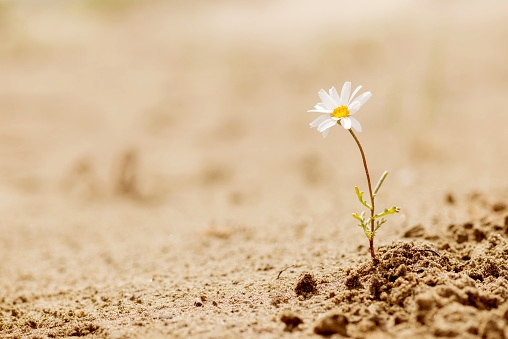Variation in climatic conditions is one of the red-hot subjects in every discipline and nowadays many models have been developed to quantify this phenomenon. Flora and fauna are particularly influenced by climate change because of life-threatening variability in maximum and minimum air temperature and precipitation patterns in all cropping systems. Climatic variability is affecting food production at local, regional and continental levels, therefore, influencing the lives of all human beings, plants and livestock systems [1].
Farming systems is today an approach of developing farm strategies based on principles of productivity, profitability, stability and sustainability and new farming systems research are important for the improvement of agriculture as whole, especially in times of climate change. Among these systems, recently, dry farming of dryland farming is becoming again an interesting point of discussion.
But what is dry farming?
Dry farming is often described as crop production without irrigation during a dry season, usually in a region that receives at least 20 inches of annual rainfall, and utilizes the moisture stored in the soil from the rainy season. A broader definition of dry farming is a low-input, place-based approach to producing crops within the constraints of the climate. A dry-farmed crop is irrigated once or not at all. Farmers globally are exploring adopting dry farming methods as a climate resilience strategy to cope with less water available for irrigation.

Dry farming and various techniques associated with it have deep historical and varied cultural roots back millennia, but in many regions of the world it has become attractive in the last decades because of the climate change effects.
Dry-farmed doesn’t necessarily mean “without water”, but in most cases plants take up moisture stored in the ground. So it is important to study first the potentials of drylands.
Successful management of dryland framing system depends upon: retention of precipitation on land, reduction in evaporation and utilization of drought tolerant crops. This is possible through sustainable intensification which is described as raising yields without additional land conversion and without harming the environment [1].

Dry farmers try to select a site with deep soil and good water-holding characteristics and then utilize a suite of practices to conserve soil moisture for crop growth. Some of the practices that support dry farming include: early soil prep and planting; selecting drought tolerant, resistant or early-maturing cultivars; lower planting density; cultivation or surface protection to prevent crusting and cracking of soil surface; diligent weed control; and improving soil health and water-holding capacity with practices such as cover cropping, rotation, and minimizing soil disturbance.
Strategies to support farming systems in times of climate change.
But climate change affects all farming systems. In general, all farming systems are being negatively affected by climate change and global warming, but dry land farming systems are particularly vulnerable. Dry farming is attractive because of water resources will be unpredictable in the future, but it is not the only solution for climate change effects on soils. However as the dry farming has many interesting points in favor, further research are needed. In the study of Ahmed et al. [1] for example the importance of process based mechanistic models are analyzed. They can be used to support dryland agricultural systems as these models can identify yield gaps and suggest ways to minimize these gaps under alternative scenarios. Agricultural systems modelling is needed to quantify the benefits and trade-offs from alternative practices at the farm scale. Thus, technology-based intervention could be a valid support for agriculture of dryland farming systems. This support will help to achieve sustainability development goals in the long run. The negative impacts of climate change on dry land farming systems can be minimized by the quantification of impacts on the systems, by the use of available data sets with further analysis and by the application of ‘what-if’scenarios using process-based models.
[1] Ahmed, M., Hayat, R., Ahmad, M. et al. Impact of Climate Change on Dryland Agricultural Systems: A Review of Current Status, Potentials, and Further Work Need. Int. J. Plant Prod. 16, 341–363 (2022).





